

On July 20, 2023, at Helsinki Airport, border guards removed a young man covered in tattoos from a flight to Nice. From afar, one might mistake him for a metal band member or a seasoned biker, but in reality, the detainee is a well-known Russian neo-Nazi wanted for war crimes. For the past 10 years, Yan “Grand Slav” Petrovsky actively participated in the war in Ukraine as the deputy commander of the neo-Nazi reconnaissance and sabotage group Rusich (led by the infamous sadist and animal abuser Milchakov) and oversaw the reconnaissance unit Zimargl. Since the start of the war in Donbas, he gained notoriety for sadistic acts, marauding with Milchakov, torturing captured Ukrainian soldiers, and posting photos online. Following setbacks in Ukraine, Petrovsky, sanctioned by the EU, the US, and Ukraine, changed his name and planned to return to Europe as if nothing had happened. However, it seems he may find himself standing trial in Ukraine.
Content
Who is Yan «Grand Slav» Petrovsky?
Military crimes and participation in the occupation of Ukrainian territories
Yan Petrovsky's (Vojslav Torden's) peacetime activities
Perhaps Petrovsky could have slipped away to Finland if it weren't for Ukraine's vigilance. Following Ukraine's request, he went from a refugee center to Helsinki's prison. Aware that the next step after a Finnish respite would involve intense questioning by the Security Service of Ukraine (SBU), the detainee tried everything to delay or prevent being handed over to the Ukrainian authorities. To the Finns, Yan Petrovsky claimed he was solely involved in political activities and hadn't participated in combat, portraying himself as an ordinary refugee rather than a dangerous criminal.
Who is Yan «Grand Slav» Petrovsky?
Yan Petrovsky was born in 1987 in Irkutsk. After his parents' divorce, he and his mother moved to St. Petersburg, where he attended school, developed an interest in history, and engaged in historical reenactments. At the age of 16, when his mother remarried a Norwegian, Yan found himself in Norway, in the oldest city of Tønsberg. He seamlessly integrated into the immigrant-friendly Scandinavian society, learned the language, and, after finishing school, enrolled at the University of Oslo in the graphic design faculty.
The exact moment when Petrovsky became interested in Nazism is unknown. He claims to have been a patriot since childhood but oddly hesitated to return to Russia. He enjoyed discussing the shared history of Slavs and Scandinavians, with Perun and Odin coexisting as tattoos on his body. After completing his studies, Petrovsky worked as a tattoo artist at the popular True Metal Tattoo salon in Oslo, known for its clientele leaning towards the far-right. He first gained public attention in 2010 in connection with the case of the notorious St. Petersburg neo-Nazi Vyacheslav Datsik. It was on Petrovsky's advice that Datsik applied for political asylum in Norway, a request that was ultimately denied.
Petrovsky first gained public attention in 2010 in connection with the case of the notorious St. Petersburg neo-Nazi Vyacheslav Datsik
In 2010–2011, Petrovsky attempted to establish a local branch of the neo-Nazi Slavic Union in Oslo. During this period, he often visited his first homeland, St. Petersburg. During one of his visits, he met a young Nazi, sadist, and animal abuser Alexey “Fritz” Milchakov, who gained notoriety online for killing and eating a puppy.
The young Nazis found common interests and started communicating closely, and then the war in Ukraine began, providing them with an excellent opportunity to kill people for pleasure. By the summer of 2014, the core of the sabotage reconnaissance group Rusich had formed, consisting of St. Petersburg neo-Nazis: GRU spetsnaz operative Alexey “Fritz” Milchakov, Yan “Grand Slav” Petrovsky, Kirill Rimkus, and Boris Voyevodin, a Federal Drug Control Service (FSKN) Grom [Thunder] spetsnaz operative. On June 20, the assembled group headed from St. Petersburg to Ukraine. According to one participant's memories, the trip received unofficial approval from the Ministry of Defense as “humanitarian.” However, after crossing the border, all participants received weapons and took part in military actions as part of the rapid response group of the Luhansk “Batman” battalion led by Alexander Bedny, a former member of the 24th separate battalion of the USSR militia spetsnaz. While in Rusich, Petrovsky gained notoriety as a rogue by torturing and abusing prisoners of war. For the sake of intimidation, he posted photos of burnt and mutilated corpses of Ukrainian soldiers online.
Petrovsky gained notoriety as a rogue by torturing and abusing prisoners of war
After 2015, Petrovsky returned to Norway, joining the ranks of the far-right Soldiers of Odin movement, known for numerous attacks on migrants. At that time, he lost his residency status in Norway, and authorities deported him to Russia, recognizing his activities as extremist and a threat to national security.
In 2017, the Fontanka news portal discovered Rusich members in Syria, including Yan Petrovsky, who participated in storming Palmyra. Upon returning to Russia, he engaged in educational work, conducting survival and combat training courses for children. His explanations on proper weapon handling were interspersed with demonstrations of neo-Nazi symbols, or simply put, he displayed Nazi salutes. As Yan himself stated, in peacetime, he saw his calling in preparing like-minded individuals for a major war. Petrovsky's civilian activities were associated with the North Slavic Community and the Volunteer sport center. Both the North Slavic Community and the Volunteer sports center, like the Rusich group, are neo-Nazi entities within the Union of Volunteers of Donbass, led by Russian State Duma deputy Alexander Borodai. Additionally, these organizations receive unofficial support from the Public Chamber of St. Petersburg and the governor of St. Petersburg, Alexander Beglov, as has been reported by The Insider.
As revealed by The Insider, in March 2019, Yan Petrovsky changed his name to Vojslav (!) Igorevich Torden, hoping to evade sanctions and avoid border crossing issues caused by his listing on the Peacemaker website.
On February 24, 2022, as Russia initiated a full-scale invasion of Ukraine, Voislav, a member of the Rusich battalion, actively took part in the offensive. Faced with the failure of Putin's blitzkrieg, Petrovsky-Torden became disillusioned with the conflict and made the decision to relocate to Finland. Officially, “Grand Slav” cited the pursuit of education for his family as the primary motive, and favorable conditions facilitated this move. Petrovsky-Torden's wife successfully enrolled in the University of Applied Sciences, securing Finnish residency for herself, her husband, and their three children.
Faced with the failure of Putin's blitzkrieg, Petrovsky-Torden decided to relocate to Finland
On July 19, 2023, the couple, accompanied by their children, crossed the Torfyanovka – Valimaa border checkpoint. At that very moment, facial recognition software alerted that Vojslav Torden and the wanted Yan Petrovsky were identical. Subsequently, on the following day, during an attempt to board a flight to Nice, Vojslav was halted by border service officers. Surprisingly, this incident received limited public attention, with media commentary surfacing only a month later. Petrovsky-Torden's associates maintained silence initially, optimistic that the situation would naturally resolve itself. It was only when the SBU requested extradition that they sounded the alarm.
Military crimes and participation in the occupation of Ukrainian territories
Now, Petrovsky is trying to prove that he did not participate in any combat actions. While his military exploits remain unknown, his involvement in war crimes is well-documented. In 2014, joining “Batman”, i.e. the 4th Battalion of local separatists in the LNR, Petrovsky began looting, settling in a seized building in a room that, judging by children's toys, once belonged to a family or co-eds. Alexey Milchakov shared this information with the far-right publication Sputnik and Pogrom.
Upon entering Ukrainian territory, Petrovsky openly declared his objective: the merciless annihilation of Ukrainians. The Rusich group played a significant role in the clashes for the Luhansk International Airport near the settlement of Svitlivka. In a separate interview, Yan Petrovsky verified another act of war crime: he had tossed grenades at Ukrainian soldiers who, stuck in a ditch with their APC, pleaded for surrender. Following this, Petrovsky asserted that no one survived, emphasizing his policy of not taking prisoners.
Yan Petrovsky and the Rusich group as part of the "Batman" battalion, Luhansk Airport, 2014
Well before the incidents in Bucha, members of the Rusich unit had perpetrated comparable crimes. The towns traversed by the squad—Shchastia, Khryashchevate, Georgiyevka, Bolshaya Vergunka, and Lutugino—witnessed the torture and execution of civilians suspected of supporting Ukrainian soldiers.
For Petrovsky and his associates, these actions were entirely normal; they documented numerous crimes and even organized a wedding for one of their fighters.
On September 5, 2014, Rusich occupied an abandoned Ukrainian military checkpoint near the village of Metalist, where they ambushed the Ukrainian Aidar unit. When the targeted soldiers ceased resistance under the shelling, Rusich fighters began torturing the captives. One of them, Ivan Isyk, had a Kolovrat, a neo-Nazi symbol and the emblem of the Rusich battalion, carved on his cheek. Petrovsky took numerous photos with charred corpses. His accomplice Milchakov boasted about a collection of severed ears from Ukrainian soldiers. For amusement, sadists would flip over a wounded enemy, releasing intestines to instill fear.
Petrovsky and the Rusich unit participated in the famous assault and battles for Donetsk Airport alongside the Sparta and Somali battalions, assisting separatists Givi and Motorola.
From left to right: Aleksandr "Harry" Dergachov (Rusich group grenadier), Motorola, and Yan Petrovsky
In early March 2015, Rusich joined the 14th Battalion of territorial defense in the so-called LNR (formerly “Ghost”). At the end of March, Petrovsky, as part of the Rusich group, joined the Viking battalion in the so-called DNR, participating in battles in the Volnovakha direction.
The Novorossiya TV separatist channel filmed a report in which Petrovsky not only fired an anti-tank gun on Ukrainian territory but also trained others. In 2015, more horrifying photos emerged from the Debaltseve direction, showing Ukrainian prisoners of war with mutilated faces; Petrovsky posted those photos online.
In mid-2015, Petrovsky left the front, taking a break until 2017. In that year, he joined the Wagner private military company (PMC), participating in the storming of Palmyra in Syria. In Syria, Petrovsky fought under the flag of the «Norwegian Brigade» and even gave an anonymous interview to the right-wing Swedish publication Skandinavisk Frihet; however, he was later identified. The corresponding indirect evidence was published by the Norwegian outlet NRK.
The Insider found a simple confirmation posted on the Rusich battalion's own social media account:
The post from the Rusich reconnaissance and sabotage group confirms Yan Petrovsky's involvement in the war on Syrian territory, substantiating all the arguments presented by NRK
In his interview with Skandinavisk Frihet, Petrovsky indirectly admitted to a possible war crime. According to his account, they encountered an ISIS camp at night, and Petrovsky ordered artillery to fire upon it. Approximately half of the roughly 100 militants died, while the remaining were killed while either attempting to surrender or fleeing, all following Petrovsky's orders.
Additionally, Petrovsky, along with Wagner mercenaries, was involved in activities in Sierra Leone. It's likely that the private military company assisted in bringing the new president, Julius Maada Bio, to power, providing him with military support.
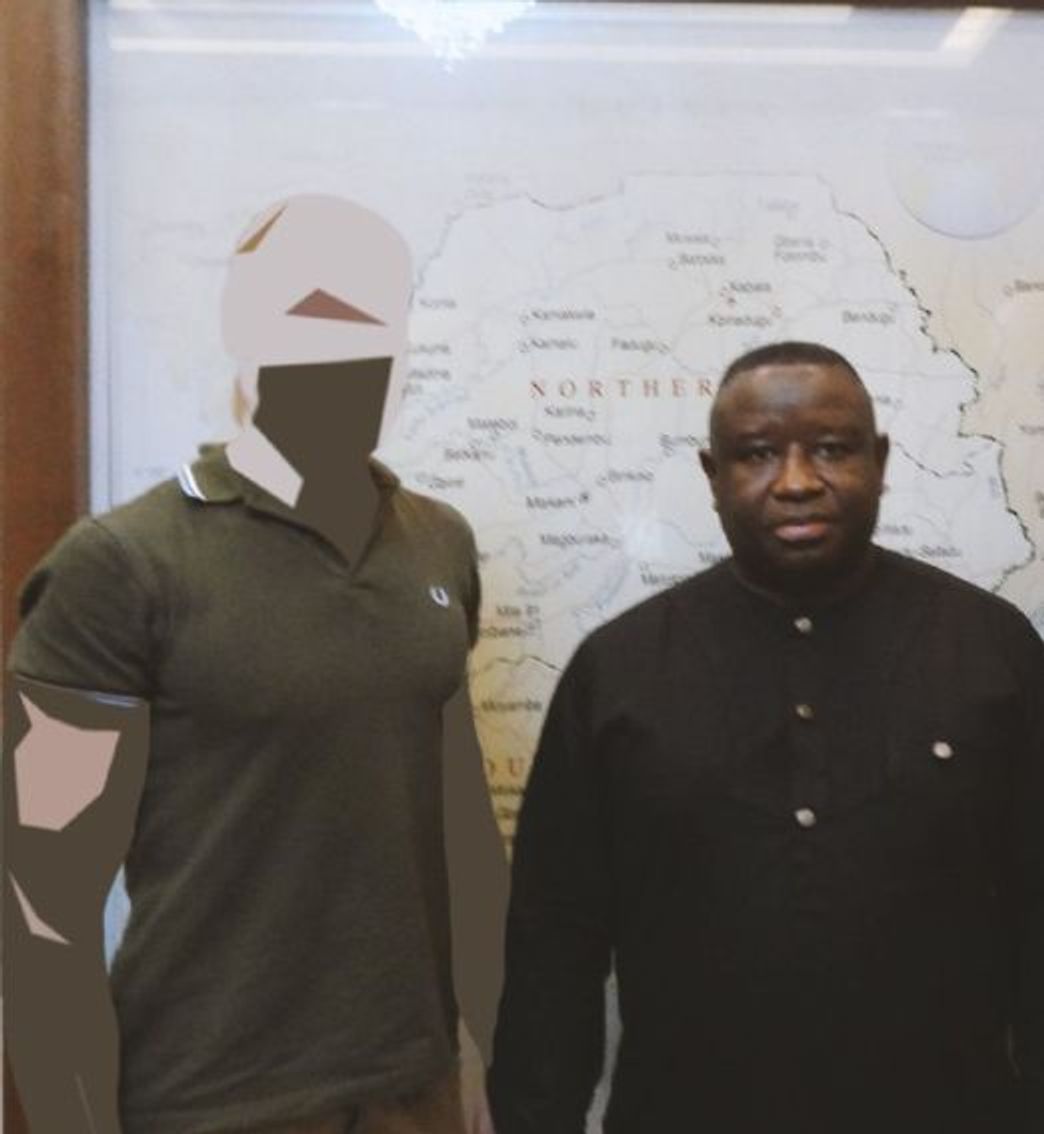
Yan Petrovsky and Julius Maada Bio, President of Sierra Leone since April 4, 2018
By the time of Putin's unexpected declaration of the war, the Rusich group was fully prepared, essentially consisting of veterans with international combat experience. Jan Petrovsky had actively participated in the invasion and occupation of Ukrainian territories, evident from numerous photographs taken on the battlefield.

Yan Petrovsky (far right) in conquered Volchansk
For their colleagues in the Rusich group, the command prepared instructions that make it clear what was paramount for the fighters during the Russian Federation's full-scale invasion of Ukraine. It's a script for the utilization of prisoners of war, as the mercenaries themselves put it. First torture (cut off ears and fingers), then murder. And if there is no such possibility, then shoot the liver through a Kevlar vest so that there are no traces of a point-blank shot – and send the POW to a hospital, which he will never reach alive. Also, Rusich members call for killing the families of Ukrainian servicemen, without regard for gender or age.
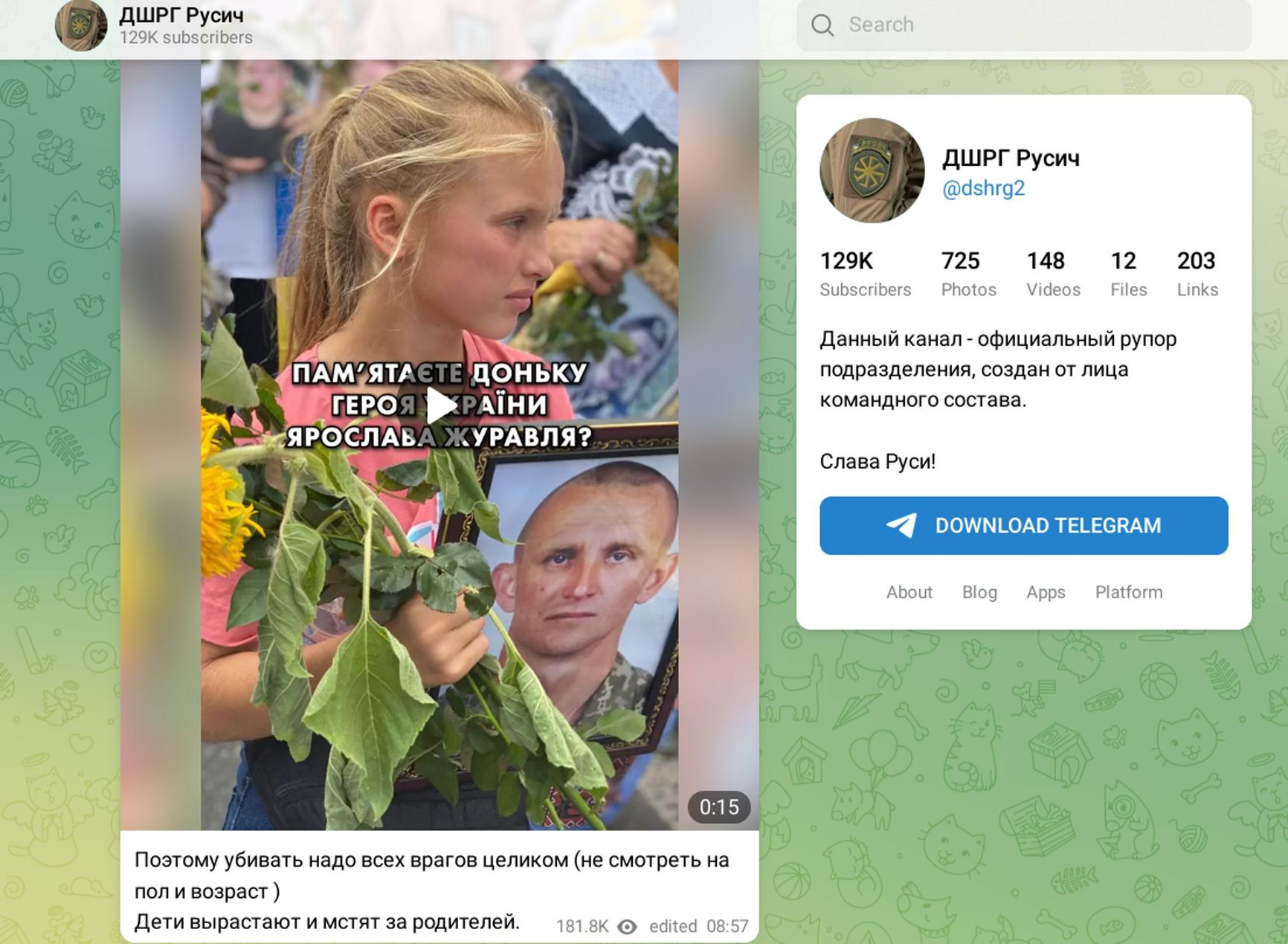
Yan Petrovsky is closely associated with the Wagner PMC. His personal number (which is less than 3000) indicates his presence in the PMC since the beginning of the Russian Federation's invasion of Ukraine in 2014. Petrovsky is also listed among the published 4,000 Wagner PMC members, identified as number 9.
Yan Petrovsky's (Vojslav Torden's) peacetime activities
In addition to his mercenary activities, participation in war crimes in other countries, and territorial occupation, Petrovsky, also known as Torden, is an expert in propaganda. His interest in history and reenactments quickly evolved into a passion for neo-Nazi ideals, combined with ideas of the “Russian world” and Norse mythology.
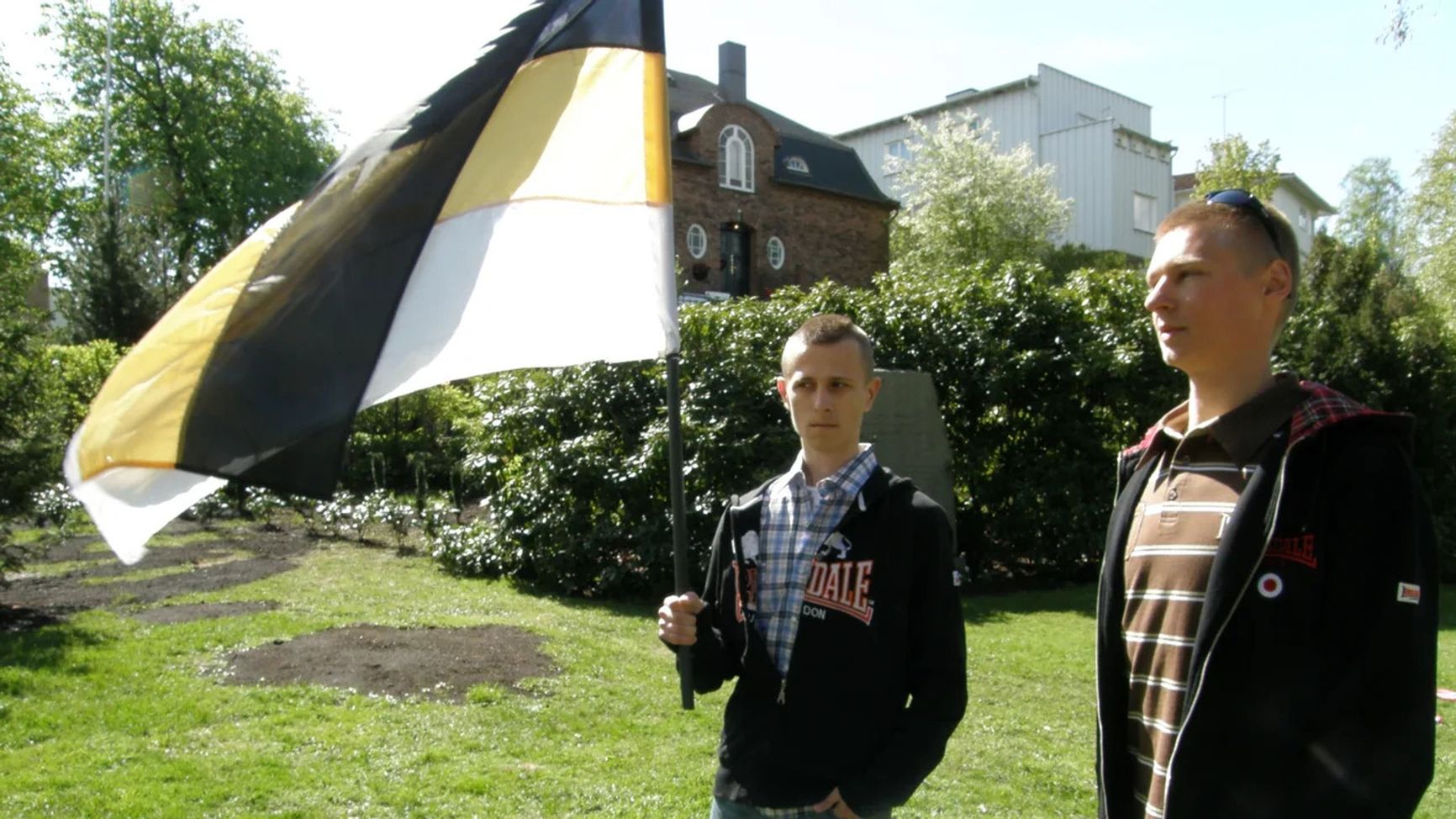
Yan Petrovsky (on the right) and his fellow extremist Oleg Neganov (on the left) in Vestre Gravlunde, Oslo
While in Norway, Petrovsky attempted to establish connections with local right-wing radical groups, such as the Nordic Resistance Movement. On May 1, 2014, he was spotted at a march of the right-wing radical Party of Swedes (formerly the National Socialist Front) in the company of another neo-Nazi residing in Norway, Stanislav Prykhodko.
Petrovsky established connections with the oldest Polish neo-Nazi association, Zadruga, displaying their flag in his room. They, in turn, regularly supported and participated in the actions of the Rusich group.
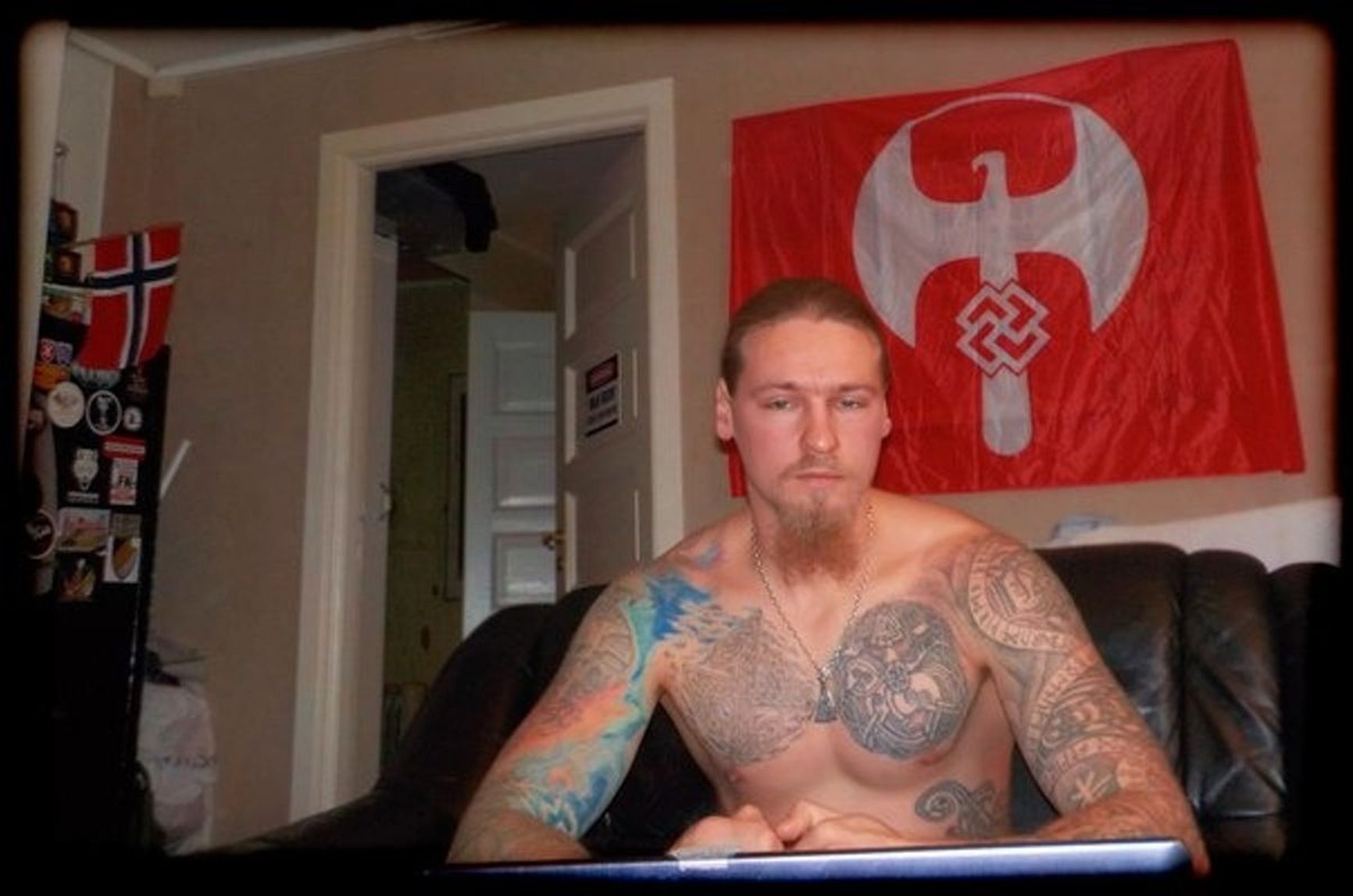
Some of Petrovsky's Polish friends fought alongside the Rusich group, while others actively promoted their alliance and shared neo-Nazi ideas with a leaning towards supporting Kremlin ideals. In St. Petersburg, Petrovsky declared at a congress of neo-Nazis from across Europe that he had participated multiple times in European nationalist forums and called for war in favor of Pan-Slavism.
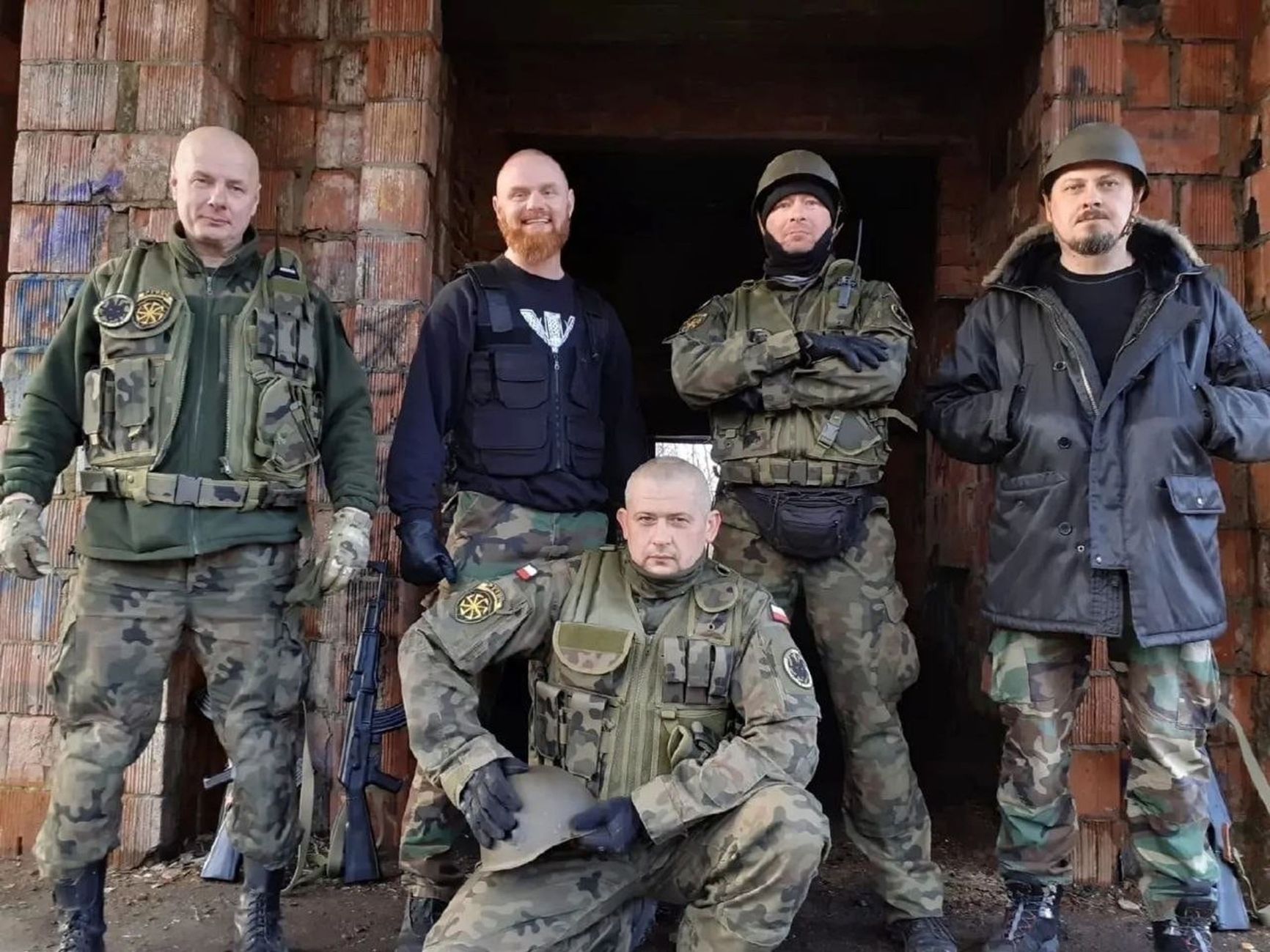
Members of the Polish neo-Nazi organization Zadruga (Fraternal Circle) - leader Artur Czmok (on the left) and former police officer Arvid Ploczewsky (below). For example, in this video, a fighter from the Rusich group and Yan Petrovsky (in the second row) send greetings to their Polish brothers, especially those from Krakow, from a seized building in Ukraine
In 2016, Petrovsky assumed a central role in the Norwegian chapter of the Soldiers Of Odin, an ultraright group patrolling Norwegian streets and intimidating migrants. After his arrest in Norway, he was deported to Russia as a threat to national security. He was accused of recruiting Scandinavian residents, particularly in ultraright circles, in the interests of Russia, possibly as part of an overarching directive within an intelligence network.
Upon returning to St. Petersburg, Petrovsky and Alexey Milchakov established the Rusich military-patriotic club, focusing on military training and propagating pseudo-patriotic ideas against European and Western values. The club's activities, including training, took place at the Partizan club located at the GRU spetsnaz base in Pskov, where the 76th Guards Air Assault Division, associated with Dmitry «Wagner» Utkin, was stationed. The club also trained at the Wagner PMC base near the village of Sertolovo in the Leningrad region.

By the start of the full-scale invasion, Yan Petrovsky had gained enough authority to become the commander of the reconnaissance unit Zimargl, personally training its fighters. All course registrations were handled by someone nicknamed SlavaDrakkar, who also designed Rusich's merchandise. Based on the phone number, it appears that it was Yan «Grand Slav» Petrovsky who operated under this pseudonym.
As a member of the Union of Donbass Volunteers, Petrovsky conducted joint exercises with the North-Slavic Community and the Volunteer sports center, as previously reported by The Insider. When the Ukrainian Security Service (SBU) requested Petrovsky's extradition, members of the community actively supported him, writing official requests and reaching out to deputies and officials.